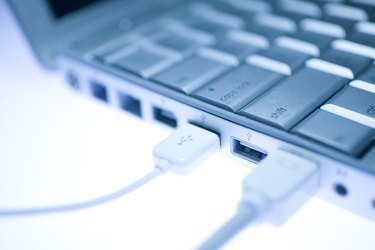
Universal Serial Bus (USB) ports are a convenient way to interface with your computer, either to use USB gadgets or store data externally. Windows offers an easy method for adjusting the power output to your USB ports, so you can conserve battery power and limit access by external devices. Through the Device Manager, you can customize which USB ports receive power, and the settings that govern power output to these devices.
Step 1
Open the Device Manager by clicking "Start," "Control Panel," "Hardware and Sound" and "Device Manager."
Video of the Day
Step 2
Expand the "Universal Serial Bus controllers" tree by clicking on the arrow next to that heading. Here, you will see all USB controllers and USB root hubs (USB ports) on your computer.
Step 3
Right-click on the "USB Root Hub" you want to change, and then click on "Properties" to open the USB port's Properties dialog box. Under the Power Management tab, you will see the option for restricting power to the USB port to save battery power. Choose your desired settings using the checkboxes and then click on "OK" to save these settings.
Step 4
Repeat Step 3 for all USB Root Hub devices to customize the power output to your computer's USB ports.
Video of the Day